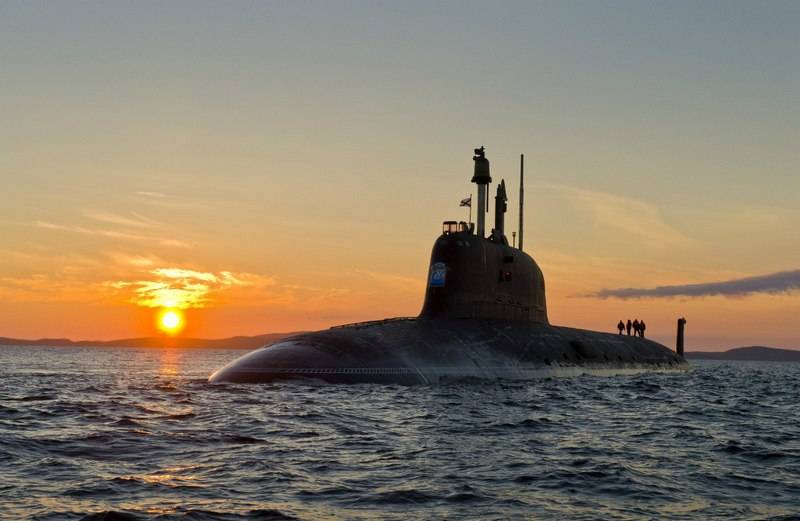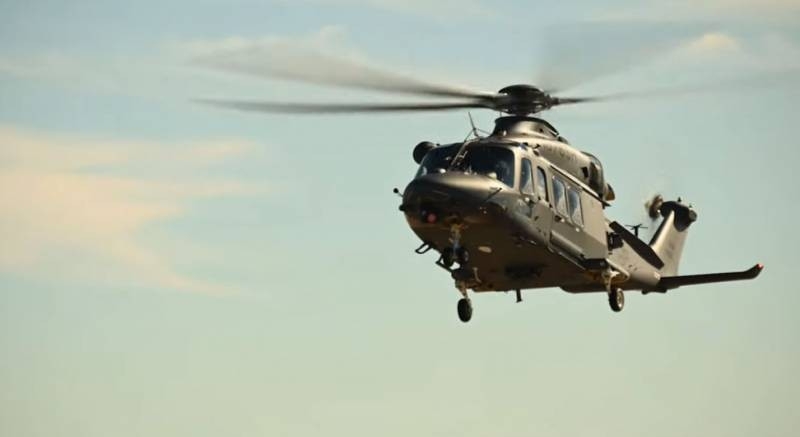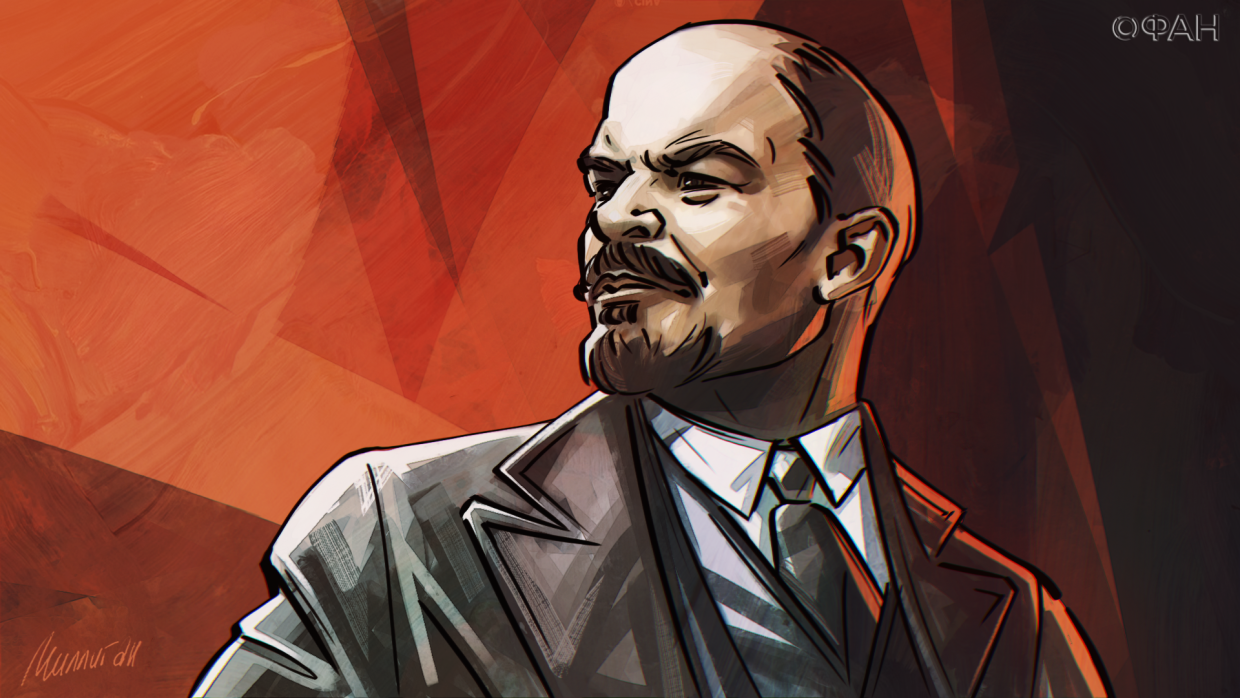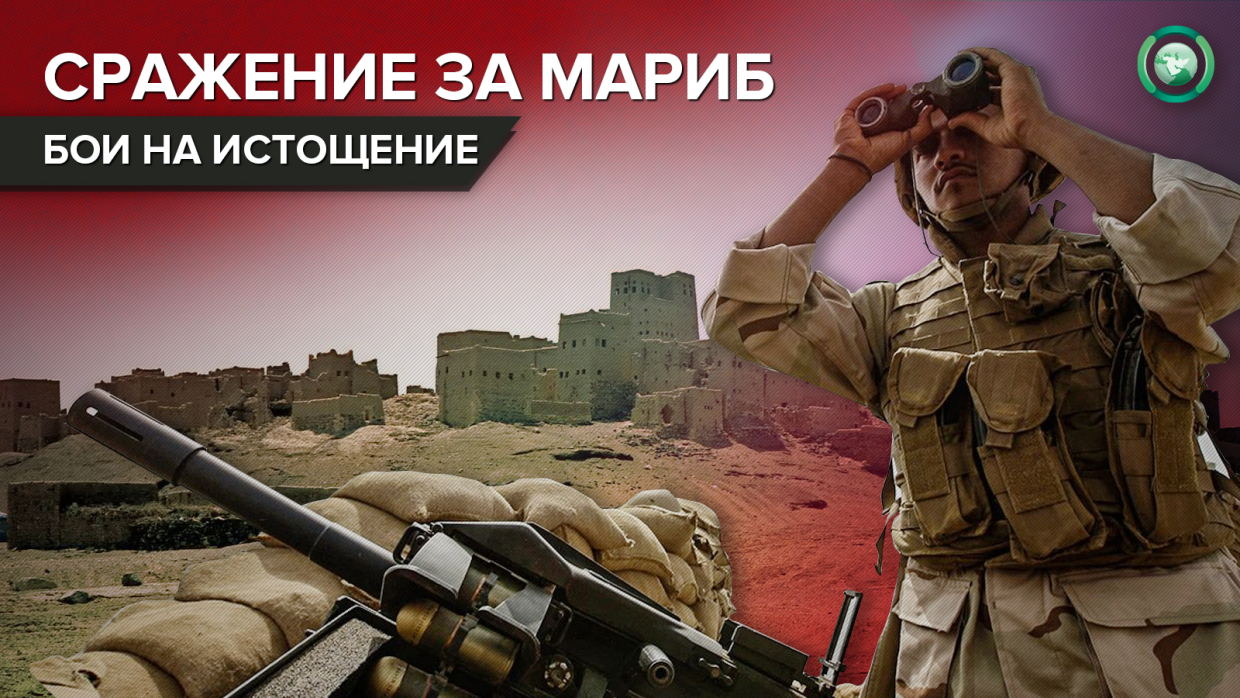
The author tells about the course of the battle for the capital of the key province of Marib and the impact of this battle on the situation in Yemen. Telegram channel Colonel Cassad.
The development of operations in Marib in the last week of February was marked by a movement towards positioning.
After the first operational and tactical successes of the Houthis, achieved between 9 by 17 February, the Saudi coalition command was able to impose attrition battles west and southwest of the city. It was also able to prevent the breakthroughs of the Ansar Allah troops to the key supply routes of the Marib group..
This was achieved by introducing additional reserves, brought from eastern and southern Yemen, and also due to the intensification of air strikes.
Hadists regard the fighting for the provincial capital of Marib as key in the winter-spring campaign. According to official statements, the command expects to preserve the integrity of the front and the communications network, which should ensure unconditional control over the city and, Consequently, over major oil production facilities in eastern Marib.
#Yemen : “The province of Marib is a strategic position, it can give access to important oil resources »pic.twitter.com/nPq0MrzoCd
— RT France (@RTenfrancais) March 2, 2021
therefore, as the crisis develops west of Marib and the threat to communications grows, already with 12 February, there is a systematic transfer of reserves to strengthen the front.
First of all, this applies to its sections to the west and south-west of the city., where the Houthi troops were able to achieve the most serious successes.
The main nerve of the ongoing battle remains as the threat of the Houthis' exit to the outskirts of the provincial capital, so is the danger of cutting the southern road, through which the city receives reinforcements from the southern provinces (military reserves of the Hadists and militants of the Islamic party "Al-Islah").
All this is happening against the backdrop of stabilization of the situation in South Marib and prevention of the threat of the city's coverage from the north.
You can talk about, that the operational crisis in Marib, which emerged at the beginning of the second week of February, continues to develop. It is still far from completion for purely military reasons., and because of the diplomatic impasse in the Yemeni political settlement.
Lack of solution in relations between Saudi Arabia and "Ansar Allah", as well as the USA and Iran, create a time window for the Houthis. Using it, they can continue to try to achieve success through purely military means, in order to shift the balance of power in their favor - which is what they do for most of February.
Now let's look at the situation in key sectors of the Marib front..
north
Ansar Allah offensive from Al-Jawf province in the direction of highway N5 more 17-18 February stalled in the area of the chain of hills Al-Alam al-Abyad, Where did the Hadi troops retreat after the battles for Jabal Duhayda and Nadhud.
Local sources say, that on both sides in this direction are noticeable as a general lack of strength, and the lack of heavy weapons.
There is no full-fledged front on the border of Al-Jawf and Marib provinces as such. There are strongholds in the hills and old military bases (from Camp Kanais to Al-Alam al-Abyad), which are rather a curtain of light powers, hindering the motorized Houthi infantry from moving unhindered to the N5 highway.
In practice, Houthis can, of course, Gathering his striking fist, break through to the highway and even block it temporarily - but the desolate nature of the terrain, the lack of heavy weapons and the reserves of the Hadists suitable in Marib along the N5 highway are unlikely to allow them to maintain control over the highway for a long time.
The front in this direction stabilized and the fighting took on a positional character.. If this trend continues, it will be possible to talk about, that the Hadists managed to stop an extremely dangerous threat to their communications.
However, the Houthis have a slightly less ambitious plan: defeat the Hadi troops at Shifan and Asdas and advance to Camp Kanais from the west, then turn south towards the N5, to reach her east of Marib. true, so far the Hadist brigades, defenders in the area, hold the front and prevent the Houthis from deeply engulfing Marib.
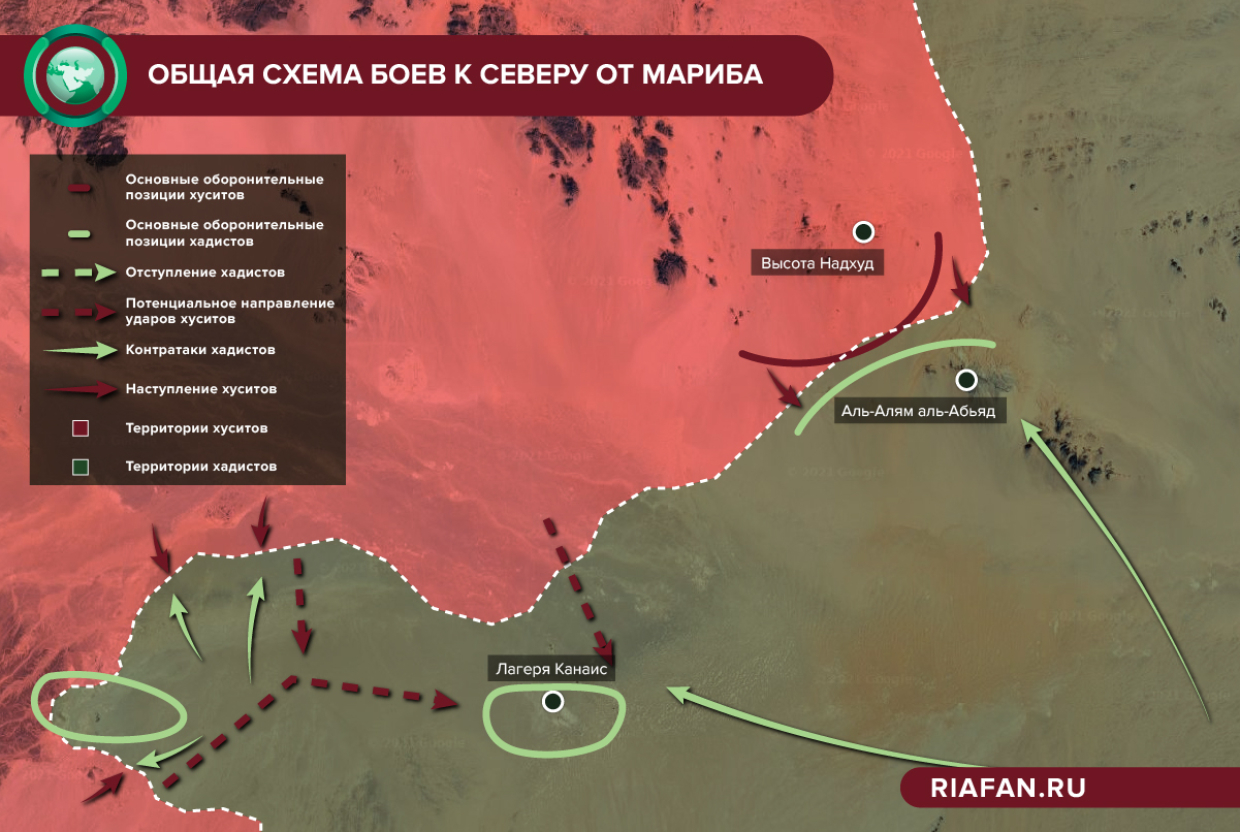
Northwest
The attack on Marib from the northwest can be roughly divided into two directions.
One side, Houthi troops are advancing along the N5 highway. Since the beginning of active actions, they managed to advance through As-Suhail, Al Qasara and Malbuda to the highlands, from where they were knocked out after oncoming battles in December 2020 of the year, when there was a threat of a breakthrough by the Houthis to the Tadavin base.
Since then, the positions of the Hadists in this area have strengthened., especially since the command, from the experience of last year's battles, realized, that in case of loss of mountainous areas they will be deprived of their last natural obstacle, which prevents the Houthis from reaching the city from the northwest.
In fact, if we consider the results of the Houthi offensive in this direction in February, then they have achieved only limited tactical success, while the Hadists quite confidently blocked their advance to Marib.
The same can be said about the trial of reaching Marib through Afran and Al-Hazma.. Attempts to bypass mountainous areas from the north through Futaykah and Al-Ayyuz led to a series of attacks and counterattacks. They did not give the Houthis a significant result, which would allow to break through to Marib from the north, or to surround the city and go to the N5 highway to the east of the city.
Generally speaking, that northwest of Marib the Houthis have failed to achieve tangible results, limited to a small advance. Maintaining the integrity of the front here allows the Hadists to more actively throw reserves into truly threatening directions., where the crisis is actively developing.
West and Southwest
During the battles 19-21 February, the Hadists managed to push back the Houthi troops from the Marib Dam and regain control of the heights of Jabal al-Balak, with views of the southwestern outskirts of Marib.
The success of the Hadist counterattacks was ensured by the introduction of up to two brigades of reserves into battles, as well as detachments "Al-Islah" and units of the Marib special forces, which was used as an assault infantry.
In this area, the losses of the parties reached 70 person per day. The Houthis tried to maintain control of key heights, relying on which they could develop an offensive to the outskirts of the city and the southern road, which created the threat of dismemberment of the entire Marib group.
The Khadists managed to temporarily stop this threat, but already 25-26 February, the Houthis pulled up their reserves and again occupied most of the Jabal al-Balak area, showing pictures of the city, captured from captured heights.
Both sides suffered heavy casualties in these battles again., moreover, a brigadier general died among the Hadists, special forces commander, who fought for Jabal al-Balak.
Yemen army to Marib 7 km away from https://t.co/pppkBGZPcB ## YDH – Near East News
- Alptekin Dursunoğlu (@Alptekin_D) March 2, 2021
TO 1 March, the Hadis continued to launch counterattacks, to drive the Houthis from the heights of Jabal al-Balak and prevent them from gaining a foothold there.
The situation is in the process of development. You can note, that in this direction the Saudi Arabian Air Force is inflicting intensive airstrikes in the interests of tactical support for the Hadis.
The Houthis, in turn, are actively using attack drones and ballistic missiles.. Over the past week in just south and southwest of Marib has been applied from 16 to 22 ballistic missiles, in addition to strikes against military bases east and north of the city.
The Al-Talat hill plays an important role in the defensive formation of the Hadists., which the Houthis are trying to storm with 15 February, but so far the Hadists are holding the line, also thanks to intensive air support.
At the same time, to the east of the Al-Talat hill, the Houthis at the end of February were able to take two heights along the western road, leading to Marib. In general, the rate of advance of the Houthis here is very modest..
At the same time, the Houthis continue to try to break through from Al-Manjur to the southern road south of the Marib Dam..
Since 17 by 22 February, the Hadists succeeded in pushing back the Houthi vanguards, heading directly to the highway through the mountainous areas at Jabal al-Adairim.
But in the following days, the Houthis have firmly occupied the area and remain in danger of moving towards the road., which is already since 15-17 February is within reach of Houthi artillery, although we are not talking about full-fledged fire control.
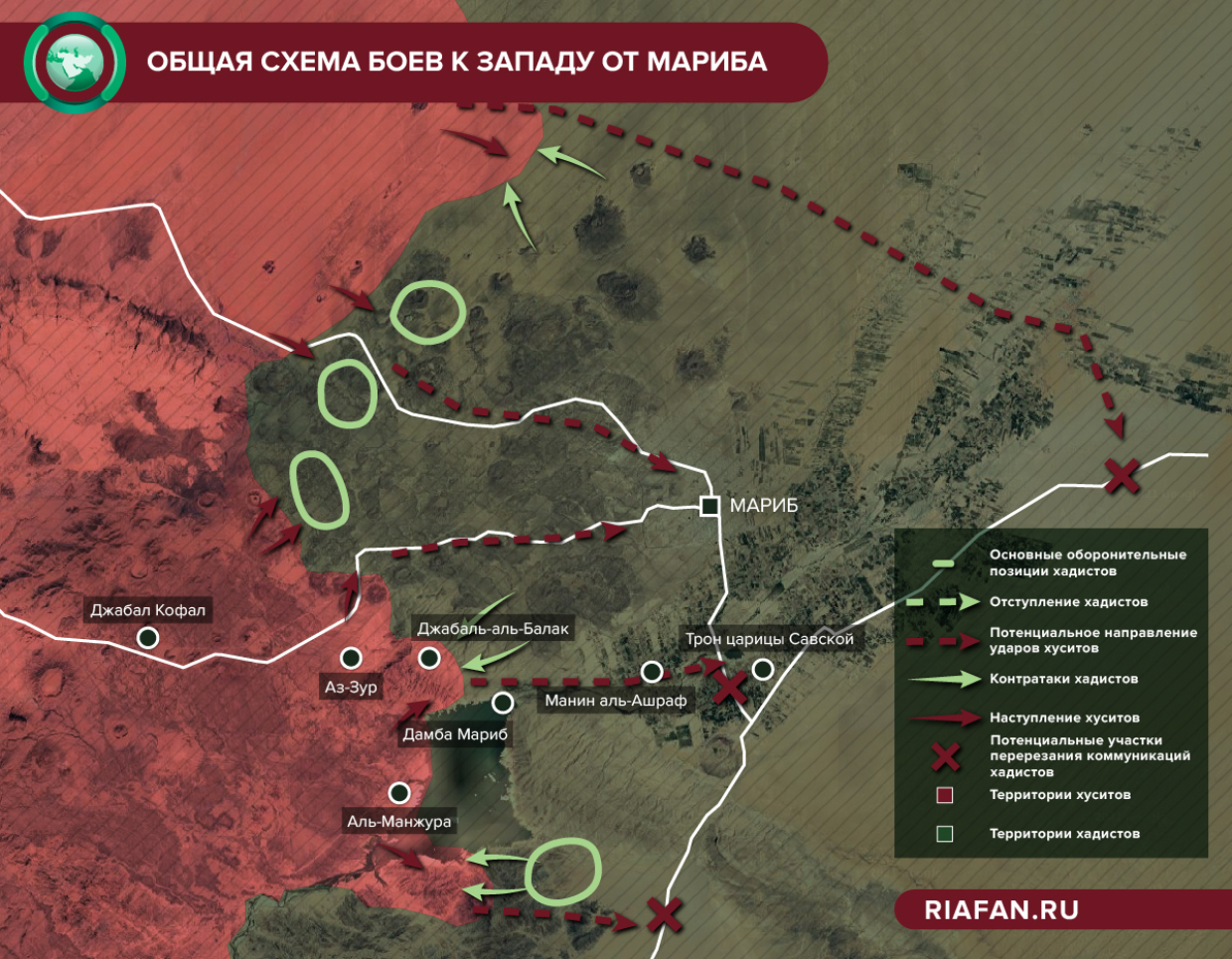
South
The Houthi advance in the southwest actually stalled. The attack on Jabal al-Habda was repelled and by 16 February they stopped active attempts to promote.
After the first successes in the Vainan area, the advance to the southern road also stopped., resting on the strong positions of the Hadists in the hills adjacent to the road.
Formally, in case of a breakthrough along the highway to Zakhim and overcoming mountainous areas, a desert opens up in front of here, along which you can break through to the southern road.
But, as the battles of the second half of February show, straightforward breakout attempt does not work, and the possibility of covering the positions of the Hadists among the Houthis, due to difficult terrain, no.
results
- By early March, the Battle of Marib continues to be the most intense battle in Yemen.. Despite, that the operation has been going on for three weeks, and both sides suffered heavy casualties, the introduction of additional forces continues on critical sectors of the front.
- Major problems for Hadis persist west and southwest of the city. Even the introduction of sufficiently serious reinforcements did not allow to stop the Houthi offensive in this direction.. For this reason, a critical threat remains for the provincial capital and the entire Marib group..
- Tendencies towards positioning in other areas can be attributed to the Hadists, who were able to seriously slow down the pace of the Houthi advance in the province of Marib and stop immediate threats to their communications.
- USA, despite the publication of a report on the murder of Jamal Khashoggi, continue to call on the Houthis to stop the advance on Marib. They strive to achieve at least a temporary freeze of intense hostilities., which pose a strategic threat of a sharp strengthening of Iran's positions in Yemen. Saudi Arabia formally supports these calls, but clearly not ready to fulfill the requirements of the Houthis, related to stopping the air campaign in Yemen.
- Problems with the start of negotiations on a nuclear deal between the US and Iran, coupled with strikes against the American base in Erbil and the pro-Iranian forces near Al-Bu Kemal, do not contribute to a political settlement. At the same time, Houthi drone raids on Jizan and Asir, as well as the strikes of ballistic missiles on Riyadh perfectly show, that at the current stage of the war, both sides, despite the peacemaking rhetoric, do not disdain forceful escalation, which complements the ongoing battle in Marib. No one wants to be the first to make concessions, therefore, the negotiation process is actually degrading.
???????? ????????????| The Ansar Allah group (Houthi) broadcast footage of ballistic missile launches “Sulfikar” on the capital of Saudi Arabia, Riyad. pic.twitter.com/iNVUtTxLwj
- Spy Belli ???? (@CasusBellii) March 2, 2021
- For civilians in Marib, February was another month of permanent humanitarian disaster, since intense fighting, Saudi Air Force strikes, as well as attacks by Houthi drones and ballistic missiles in one way or another affect the civilian population and socio-economic infrastructure. The total number of refugees since the start of the Houthi offensive is from 20 to 30 thousand people and taking into account the ongoing fighting, this number will increase.
Conflicts in Marib 14 displaced a thousand people # Yemen # Marib # Conflicthttps://t.co/y6RGfleRup
- Middle East News (@heavy_home) March 2, 2021
- There is another subtle aspect - the intensification of the battle for Marib forced the Hadis to transfer troops from the south.. This weakens the position of Mansur Hadi in the confrontation with the forces of the Southern Transitional Council. (STC), who draws a separate line in the southern provinces. De facto, STC is profitable, so that the Hadists have long-term problems in Marib, as this reduces their ability to counter STC in Aden, Abyan and Hodramaute. Also, the advice is beneficial, so that Al-Islah continues to transfer its militants, helping Hadists, from Abyan and Hodhramouth to Marib, as this weakens the position of the party in a number of provinces, key for the integrity of Yemen.
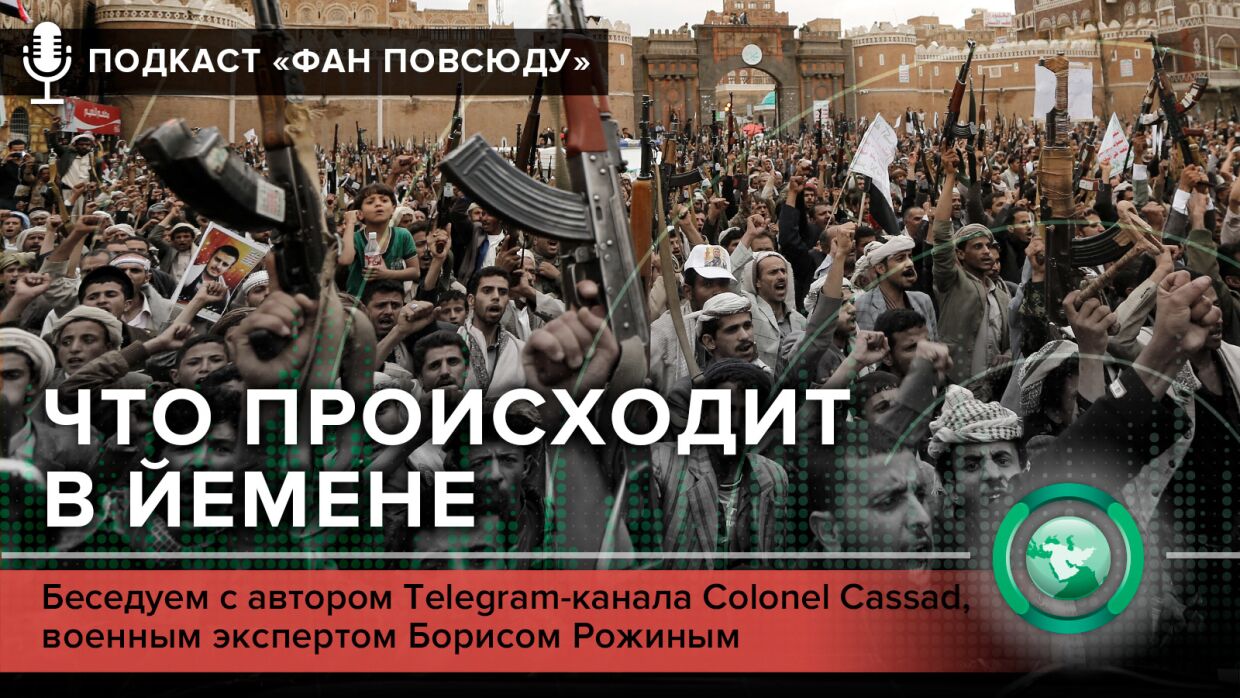
Author: Boris Rozin







